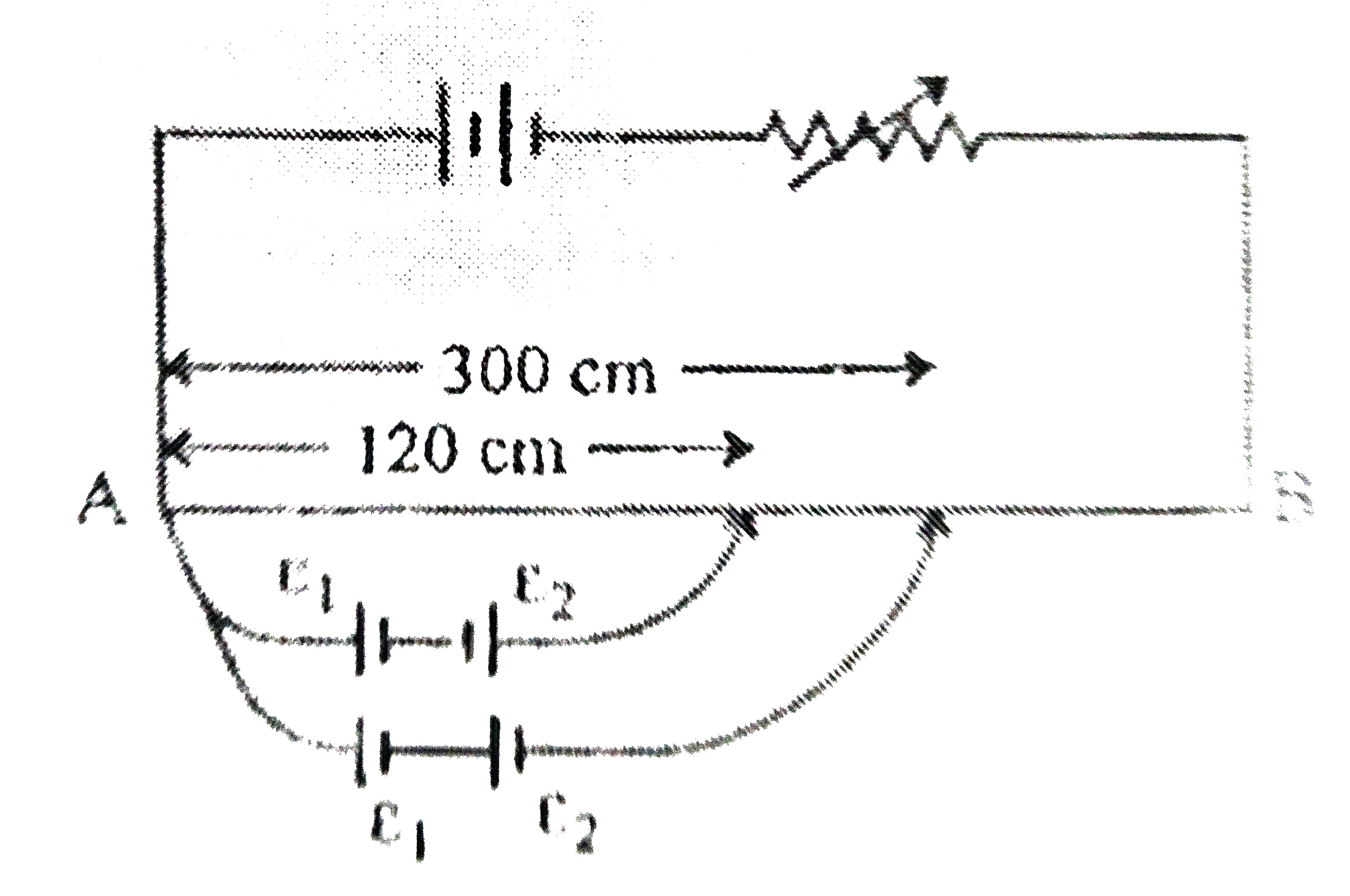Which of the following operations will not increase the sensitivity of a potentiometer?
Increase in the number of wires of the potentiometer.
Reducing the potential gradient .
Increasing the current through the potentiometer .
Increasing the sensitivity of the galvanometer.
The correct Answer is:C
To determine which operation will not increase the sensitivity of a potentiometer, we need to understand the relationship between sensitivity, potential gradient, and the factors affecting them.
1. Understanding Sensitivity:
Sensitivity of a potentiometer refers to its ability to measure small potential differences accurately. Higher sensitivity means the device can detect smaller changes in voltage.
2. Potential Gradient:
The potential gradient (k) is defined as the potential drop per unit length of the potentiometer wire. It is given by the formula:
k=VL
where V is the potential difference across the wire and L is the length of the wire.
3. Relationship Between Sensitivity and Potential Gradient:
Sensitivity is inversely related to the potential gradient:
Sensitivity∝1k
This means that if the potential gradient decreases, the sensitivity increases.
4. Factors Affecting Potential Gradient:
The potential gradient can be affected by:
- Increasing the length of the wire (L)
- Decreasing the potential difference (V)
- Changing the current (I) flowing through the wire
5. Evaluating the Options:
- Increasing the number of wires: This increases the cross-sectional area and decreases the potential gradient, thus increasing sensitivity.
- Reducing the potential gradient: This directly increases sensitivity.
- Increasing the current through the potentiometer: This increases the potential gradient (since k=IRL), which decreases sensitivity.
- Increasing the sensitivity of the galvanometer: This is unrelated to the potentiometer's sensitivity.
6. Conclusion:
Among the options, the operation that will not increase the sensitivity of the potentiometer is increasing the current through the potentiometer. This operation actually decreases sensitivity.
Final Answer:
The operation that will not increase the sensitivity of a potentiometer is increasing the current through the potentiometer.
Sensitivity of a potentiometer refers to its ability to measure small potential differences accurately. Higher sensitivity means the device can detect smaller changes in voltage.
The potential gradient (k) is defined as the potential drop per unit length of the potentiometer wire. It is given by the formula:
k=VL
where V is the potential difference across the wire and L is the length of the wire.
Sensitivity is inversely related to the potential gradient:
Sensitivity∝1k
This means that if the potential gradient decreases, the sensitivity increases.
The potential gradient can be affected by:
- Increasing the length of the wire (L)
- Decreasing the potential difference (V)
- Changing the current (I) flowing through the wire
- Increasing the number of wires: This increases the cross-sectional area and decreases the potential gradient, thus increasing sensitivity.
- Reducing the potential gradient: This directly increases sensitivity.
- Increasing the current through the potentiometer: This increases the potential gradient (since k=IRL), which decreases sensitivity.
- Increasing the sensitivity of the galvanometer: This is unrelated to the potentiometer's sensitivity.
Among the options, the operation that will not increase the sensitivity of the potentiometer is increasing the current through the potentiometer. This operation actually decreases sensitivity.
The operation that will not increase the sensitivity of a potentiometer is increasing the current through the potentiometer.
Similar Questions
Which of the following will increase the acidity of phenol ?
View SolutionWrite two factors on which the sentivity of a potentiometer depends.
View SolutionSensitivity is the
View SolutionIn the figure a long uniform potentiometer wire AB is having a constant potential gradient along its length. The null points for the two primary cells of emfs ε1 and ε2 connected in the manner shown are obtained at a distance of 120 cm and 300 cm from the end A. Find (i) ε1/ε2 and (ii) position of null point for the cell ε1.
How is the sensitivity of a potentiometer increased ?

View SolutionRods are sensitive to
View Solutionwhich of the following case entropy increases
View SolutionWhich of the following gives a reversible operation ?
View SolutionWhich of the following gives a reversible operation ?
View SolutionIn which of the following counter current operates
View SolutionIn which of the following entropy increases?
View Solution
